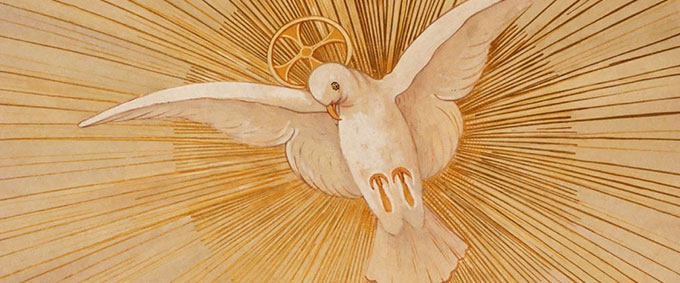Fruits of the Holy Spirit

“Just so, every good tree bears good fruit, and a rotten tree bears bad fruit. A good tree cannot bear bad fruit, nor can a rotten tree bear good fruit. Every tree that does not bear good fruit will be cut down and thrown into the fire. So by their fruits you will know them.” (Matthew 7:17-20)
This passage in Matthew's Gospel helps us to understand the Fruits of the Holy Spirit, which are the observable behaviors of people who have allowed the grace of the Holy Spirit to be effective in them. The tradition of the Church lists 12 fruits:
charity | generosity |
joy | gentleness |
peace | faithfulness |
patience | modesty |
kindness | self-control |
goodness | chastity |
(adapted from CCC 1832)
Excerpts from The New American Bible with Revised New Testament and Psalms copyright © 1991, 1986, 1970 Confraternity of Christian Doctrine, Inc., Washington, DC. Used with permission. All rights reserved. No Portion of The New American Bible may be reprinted without permission in writing from the copyright holder.
Excerpts from Catechism of the Catholic Church. English translation of the Catechism of the Catholic Church for the United States of America copyright © 1994, United States Catholic Conference, Inc., Librería Editrice Vaticana. English translation of the Catechism of the Catholic Church: Modifications from the Editio Typica copyright © 1997, United States Catholic Conference, Inc., Librería Editrice Vaticana. Used with permission.
Symbols of the Holy Spirit
In our liturgical prayers and art, we use several symbols to represent the Holy Spirit, all of them with biblical backgrounds. The fire that appeared on
Fire calls attention to the strength and force of the Holy Spirit. The wind that appeared on Pentecost was reminiscent of the wind that blew over the waters at the beginning of Creation.
The wind calls attention to the Holy Spirit breathing life into the Church.
Water represents the cleansing and life-giving action of the Holy Spirit at
The cloud is used as a symbol of the Holy Spirit because clouds provide life-giving water.
Anointing with oil is a symbol of the Holy Spirit's uniting us with Jesus, the Messiah, the Anointed One.
Official documents carry a seal on them, so the seal is a symbol of the permanent effect of the Holy Spirit on the lives of those who are filled with the Spirit.
The dove is a symbol of the Holy Spirit that comes to us from the story of Jesus' baptism, when Jesus saw "the Spirit, like a dove, descending upon him" (Mark 1:10).

